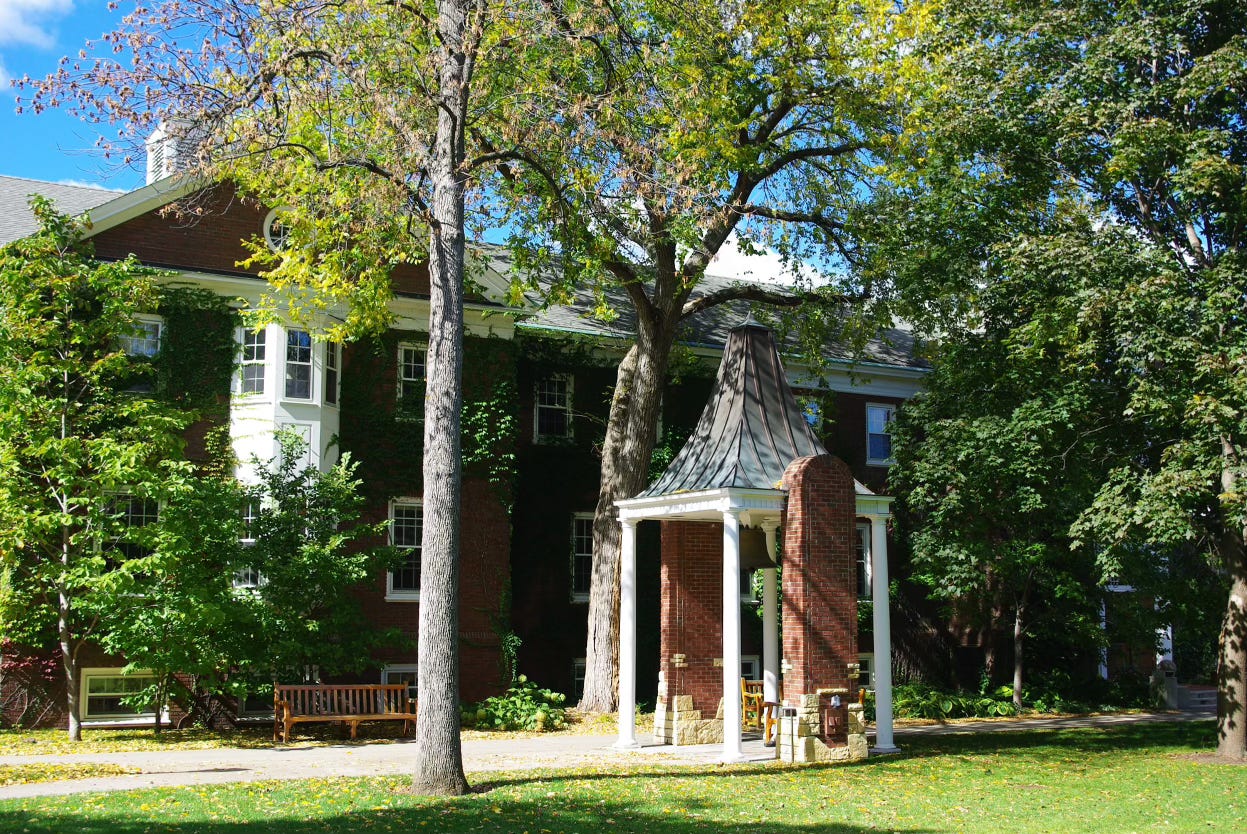Before You Donate to Your Alma Mater...
By Bob Spaulding
First Published on April 27 2019 by The Mac Weekly
Colleges and universities can be relentless in pursuing their graduates for donations. They publish alumni magazines with glowing accounts of their faculty, students, and alumni, sponsor “Alumni Weekends” to show off new buildings and hear success stories, and of course, mail out regular solicitations with convenient return envelopes for donations.
Although I have donated in the past to my alma mater, Macalester College in St. Paul, Minnesota, a thorough investigation of its intellectual climate has made me reconsider. You all may choose to look beyond the self-congratulatory praise of your Alumni Office.
An obvious place to start is the college catalog, nowadays conveniently available online by simply entering the name of the college. There you can find descriptions of the programs, campus life, faculty, courses of study, etc. An interesting exercise is to look up the courses, and course descriptions now taught in your particular major and see how they differ from the courses you took. At Macalester, it is quickly apparent that social justice issues have a toehold in many departments, and learning objectives have been replaced with viewpoint objectives.
Next, go to the student newspaper to get a feel for students’ views and opinions. At The Mac Weekly, news and opinion pieces reveal a preoccupation with left-wing and anti-American issues. Sample opinion piece: “Make Capitalists Frightened Again.” The content in many issues tends toward liberal shibboleths and shallow platitudes that could easily be countered in a real debate. But notably missing is any dissenting opinion against the relentless obsession with America’s racism, sexism, classism, and environmental doom. Are conservatives at Macalester, if they exist, intimidated into silence? One wonders how dissent from the dominant orthodoxy is treated in Macalester classrooms.
What kind of outside speakers does Macalester invite to campus? A list of recent speakers for the current and recent years totals fourteen. Excluding those that are non-ideological reveal eight that lean left and none that lean right. Angela Davis, the former Black Panther, and member of the Communist Party of USA was paid $5,000 to speak. That’s fine since she is an important historical figure. But why not follow her up with a Ben Shapiro, or another balancing figure to give students, you know, some intellectual diversity?
What kind of clubs and organizations can Macalester students join? Approximately one hundred exist and range widely from sports to acapella to politics. Of those that can be classified as ideological, twelve clearly lean left. None lean right or libertarian, although the once-defunct GOP club is being revived. Fraternities and sororities are banned.
Based on some metrics, Macalester is blessed. Classes average 17 students each, the student to faculty ratio is 10:1 and U.S. News and World Report ranks it as 26th best liberal arts college in the country. A large endowment of some $800 million covers about one-third of its annual budget. Three-fourths of its entering freshmen are in the top ten percent of their high school class. If there is a contest to pick the “Harvard of the Midwest,” Macalester is a contender.
What worries this alum, as well as many others I talk to at the three-day alumni weekends in June of each year, is that Macalester’s obvious political correctness today is the antithesis of our experience there. Our own exposure to the liberal arts opened our minds to differing opinions and challenged us to begin a lifetime of learning. We learned to value the scientific method, trust empirical evidence, detect bias, and yes, challenge authority.
In contrast, the elite students at Macalester and other prestigious “liberal arts” colleges seem to be encased for four years in a bubble of like-minded social justice advocacy that does not tolerate dissent. Identity group politics seem pervasive in clubs, publications, curricula, and perhaps classrooms. How can the graduates of such a cloistered environment cope with a world of starkly different and competing ideologies?
I’m sorry Macalester. I’ll contribute again when viewpoint diversity and intellectual integrity return to the campus.
This is Macalester Alumni of Moderation. Macalester Alumni of Moderation believe a liberal arts education is enhanced by differing points of view shared freely on campus. That includes moderate and conservative political views too. What we see in Macalester’s various publications indicates Macalester has a bias toward leftist views on socio-political issues, and that moderate or conservative students feel the heat of that bias. Please join the Mac Mods in our almost 20 year quest to protect free expression at Macalester College.


